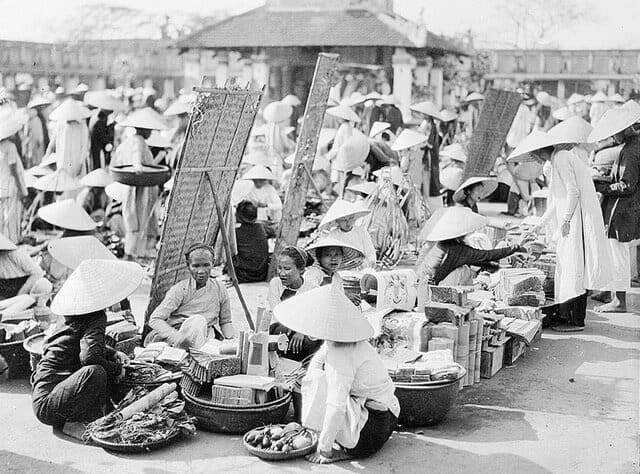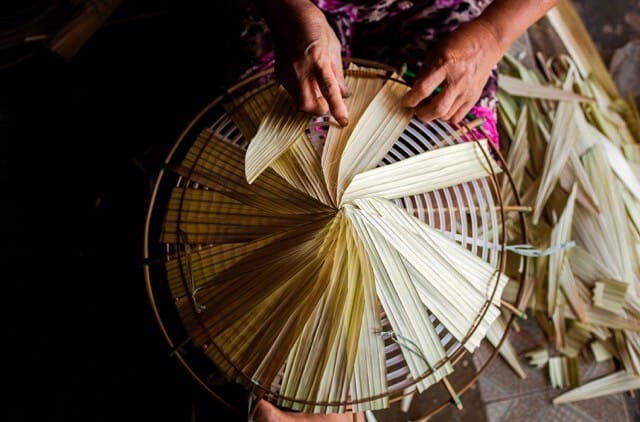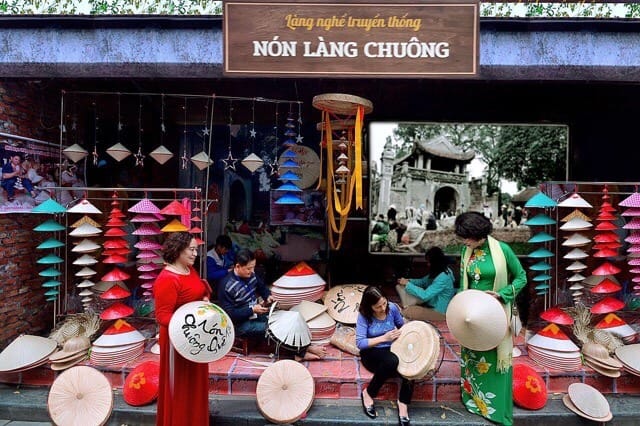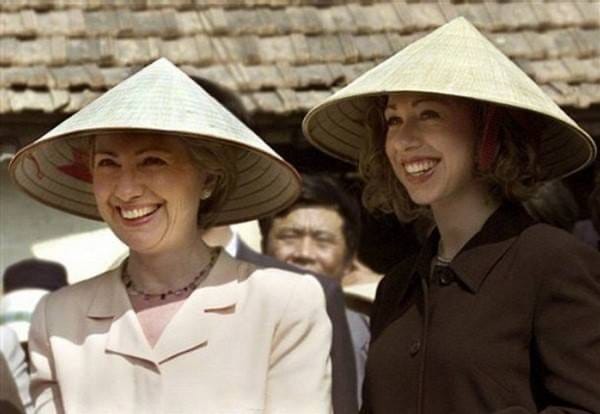The conical hat Vietnam, known as “non la” in Vietnamese, is an iconic symbol of Vietnam’s culture, history, and beauty.
Whether you’re a traveler or a local, these traditional hats will surely catch your eye. Worn by both men and women, the non la is a symbol of strength and resilience, crafted from natural materials and passed down from generation to generation.
Its cultural significance is deeply rooted in the Vietnamese people, with the conical hat being a part of everyday life. From farmers in the countryside to city dwellers, the non la is a part of Vietnam’s unique identity. With its simple yet timeless design, the conical hat has become a symbol of Vietnam’s beauty and its people’s strength.
See more: Vietnamese Traditional Clothing – The Allure of Cultural Heritage
Contents
The History and Cultural Significance of Non La
The conical hat, or “non la” in Vietnamese, has a long and fascinating history that is intertwined with the cultural traditions of Vietnam. For centuries, locals have worn the non la as a symbol of their culture and identity.

It is believed that the non la originated in the 12th century, during the reign of the Ly dynasty. Initially made from leaves of the “tho” tree, the hat was a practical accessory for farmers and laborers working in the fields. It provided them with shade and protection from the sun and rain.
Over time, the design and materials used to make the non la evolved. It is typically made of bamboo, palm leaves, or other natural materials today. The hat’s unique shape, with a wide brim and pointed top that resembles a cone, is functional and aesthetically pleasing and has become a symbol of Vietnamese culture.
Today, the non la is a popular souvenir for travelers visiting Vietnam. Many tourists choose to purchase a non la as a memento of their visit to Vietnam, and it has become a beloved symbol of the country’s rich cultural heritage and history.
Regarding Vietnamese fashion, ao ba ba is one of the most iconic pieces that has evolved and adapted.

Traditional Vietnamese Hat: The Craftsmanship and Making Process
The traditional conical hat Vietnam, also known as non la, is a beloved symbol of Vietnamese culture that has been a part of the country’s history for centuries. This iconic hat is crafted using traditional techniques that have been passed down through generations, demonstrating the skill and artistry of the Vietnamese people.
The conical hat in Vietnam is typically made of palm leaves and bamboo, woven together to form a shape that is both lightweight and durable. The palm leaves are soaked in water to make them flexible and easy to work with, then dried and cut into thin strips. These strips are then woven together to form the hat shape, which is finished with a decorative band.
Making the non la is a meticulous process that requires a great deal of patience and attention to detail. The traditional techniques used to make the hat have been passed down through generations, ensuring that the art of hat-making remains alive and well in Vietnam.

The conical hat Vietnam is an essential item to embrace for travelers to Vietnam. It symbolizes the country’s culture and heritage and reminds of its rich history and traditions. Tourists can witness the making of the non la by skilled artisans in local villages and even participate in the process.
Where to Find and Acquire Non La in Vietnam?
If you’re a traveler to Vietnam, you’ll find that the non la is a must-have item. You can find them in a variety of locations, from the bustling markets of Hanoi to the craft villages of Hoi An. The traditional conical hats come in all shapes, sizes, and designs, making it easy to find one that suits your style and needs.

When selecting a non la, it’s important to consider the quality of the hat. Take a close look at the stitching and the materials used to make sure they are of high quality.
Traditional conical hats are made from bamboo or palm leaves, so be sure to look for signs of quality craftsmanship. Furthermore, consider the size and shape of the hat, as well as any unique designs.
You want to make sure you’re getting a hat that is authentic and of high quality, as the non la is a symbol of cultural significance in Vietnam.
Experiencing Non La in Vietnam: Where to See and Capture Its Beauty
Non la is a beloved symbol of Vietnamese culture that has a rich history and is deeply embedded in the country’s cultural significance. For tourists visiting Vietnam, experiencing the beauty of non la is a must-do activity. The best way to appreciate the conical hat is to witness locals wearing it.
Tourists have the opportunity to observe the traditional hat in its natural environment by attending popular festivals such as the Mai Festival and the Mid-Autumn Festival. These festivals are perfect occasions to witness the beauty of non la and see how it is an integral part of Vietnamese culture.
What’s more, tourists can capture memorable photographs while wearing or interacting with non la. The hat is practical for sun protection and makes a unique and eye-catching accessory for photographs.
By experiencing non la first-hand and capturing the beauty of it in photographs, tourists can take home a piece of Vietnamese culture and history.
The ao dai Vietnam is a beautiful garment and an important part of Vietnamese culture.

Frequently Asked Questions
Q1: What are Vietnamese conical hats called?
A1: Vietnamese conical hats are commonly referred to as “non la” in Vietnamese.
Q2: What are the pointy hats in Vietnam?
A2: The pointy hats in Vietnam are called “non la,” which translates to “leaf hat” in English.
Q3: What does the Vietnamese hat symbolize?
A3: The Vietnamese hat, or non la, symbolizes Vietnamese identity, tradition, and harmony with nature. It also represents protection from the sun and rain.
Q4: Is it OK to wear a conical hat?
A4: Yes, it is generally acceptable for tourists to wear a conical hat, such as the non la, as a cultural experience or as a souvenir. However, it is important to respect the hat’s cultural significance and wear it appropriately.
Conclusion
The conical hat Vietnam, or Non La, is an iconic symbol of Vietnamese culture. It is a hat steeped in history, with craftsmanship and a making process that has been passed down for generations.
Tourists visiting Vietnam can find and acquire Non La in many places throughout the country and experience its beauty by seeing locals wearing it in various locations. Whether it’s a reminder of the culture and history of Vietnam or simply a souvenir, the Non La is an essential part of any traveler’s experience.


Related Posts
Saigon’s “Flower Market Replica”: Where To Find Them
Ho Chi Minh City’s floral charm is not limited to its bustling wholesale markets. Imagine wandering through a place where vibrant petals, fragrant blooms, and the spirit of traditional Vietnamese markets come alive—without the overwhelming crowds. A flower market replica captures that magic, blending the beauty of fresh flowers with the charm of a curated, […]
Is it Safe to Travel to Vietnam Right Now? A Complete 2025 Guide
Vietnam has emerged as one of Southeast Asia’s most captivating destinations, drawing millions of visitors annually with its rich culture, stunning landscapes, and incredible cuisine. However, many travelers still ask: Is it safe to travel to Vietnam right now? This comprehensive guide provides you with everything you need to know about Vietnam travel safety in […]
Ho Chi Minh Cu Chi Tunnels Tour: The Ultimate Guide
The Cu Chi Tunnels stand as one of Vietnam’s most remarkable historical sites, offering visitors a profound glimpse into the ingenuity and resilience displayed during the Vietnam War. For travelers, a Ho Chi Minh Cu Chi tunnels tour represents an essential experience that combines education, adventure, and deep cultural understanding. This comprehensive guide will help […]